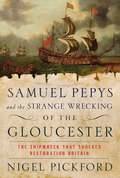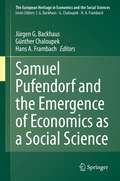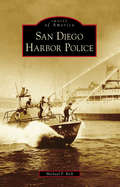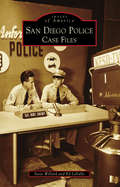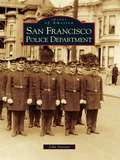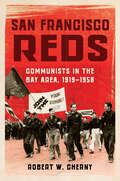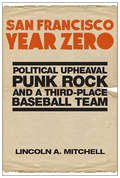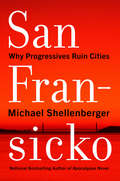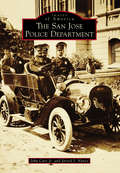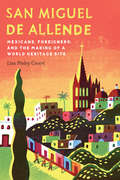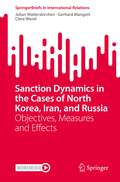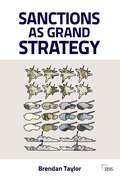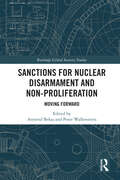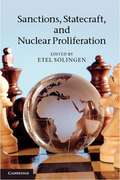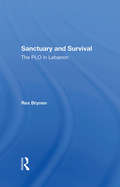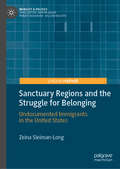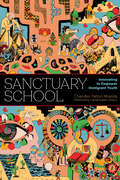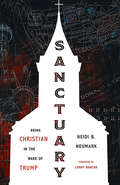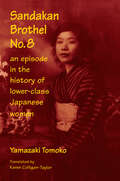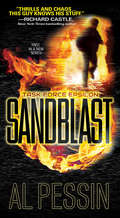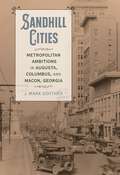- Table View
- List View
Samuel Pepys and the Strange Wrecking of the Gloucester
by Nigel PickfordA true story of royal intrigue—with famed diarist Samuel Pepys as the main protagonist—as a fatal shipwreck on the shores of Restoration Britain sparks a mystery that now may finally be solved.In 1682, Charles II invited his scandalous younger brother, James, Duke of York, to return from exile and take his rightful place as heir to the throne. To celebrate, the future king set sail in a fleet of eight ships destined for Edinburgh, where he would reunite with his young pregnant wife. Yet disaster struck en route, somewhere off the Norfolk coast. The royal frigate carrying James and his entourage sank, causing some two hundred sailors and courtiers to perish. The diarist Samuel Pepys had been asked to sail with James but refused the invitation, preferring to travel in one of the other ships. Why? What did he know that others did not? Religious and political tensions were rife in the years leading up to the wreck of the Gloucester. James was a Catholic, as was his wife, and there was a large constituency who wished them dead. Plots and conspiracies abounded. The Royal Navy was itself in disarray, badly equipped and poorly organised. Could someone on board be to blame for the sinking, either from malice or incompetence? Nigel Pickford&’s compelling account of the catastrophe draws on a richness of historical material including letters, diaries and ships&’ logs, revealing for the first time the full drama and tragic consequences of a shipwreck that shook Restoration Britain.
Samuel Pufendorf and the Emergence of Economics as a Social Science (The European Heritage in Economics and the Social Sciences #23)
by Günther Chaloupek Hans A. Frambach Jurgen G. BackhausThis book discusses Samuel Pufendorf and his contributions to the development of the European Enlightenment and the emergence of economics as a social science. Born in 1632 in Saxony, Pufendorf wrote widely on natural law, ethics, jurisprudence, and political economy and was one of the most important figures in early-modern political thought. Although his work fits within the intellectual framework of natural jurisprudence, there is an argument to be made that his ideas promoted the development of economics as a distinct discipline within the social sciences. Written by participants in the 34th Heilbronn Symposion in Economics and the Social Sciences, the contributions to this volume give an overview of Pufendorf’s influence on other authors of the Enlightenment, such as Locke, Montesquieu, and Rousseau, as well as addressing the theoretical implications of his extensive writings. Further chapters place a special focus on Pufendorf’s discussion of economic matters, such as property rights theory, price theory, taxation, and preferences and decision-making. The book concludes with analyzing Pufendorf’s influence on Adam Smith, his anticipations of elements of modern economic theory, and his impact on the history of economic thought. Providing a fresh look at one of the foundational scholars of social science, this volume will be of interest to researchers and students of the history of economic thought, political economy, economic history, and political philosophy.
Samuel Ringgold Ward: A Life of Struggle (Black Lives)
by R. J. BlackettThe rediscovery of a pivotal figure in Black history and his importance and influence in the struggle against slavery and discrimination Born on the Eastern Shore of Maryland, Samuel Ringgold Ward (1817–c. 1869) escaped enslavement and would become a leading figure in the struggle for Black freedom, citizenship, and equality. He was extolled by his contemporary Frederick Douglass for his &“depth of thought, fluency of speech, readiness of wit, logical exactness.&” Until now, his story has been largely untold. Ward, a newspaper editor, Congregational minister, and advocate for the temperance movement, was considered one of the leading orators of his time. After the passage of the Fugitive Slave Act of 1850 he fled to Canada, where he lectured widely to improve conditions for formerly enslaved people who had settled there. Ward then went to Britain as an agent of the Canadian Antislavery Society and published his influential book Autobiography of a Fugitive Negro. He never returned to the United States, and he died in obscurity in Jamaica. Despite Ward&’s prominent role in the abolitionist movement, his story has been lost because of the decades he spent in exile. In this book, R. J. M. Blackett brings light to Ward&’s life and his important role in the struggle against slavery and discrimination, and to the personal price he paid for confronting oppression.
San Diego Harbor Police (Images of America)
by Michael P. RichThe San Diego Harbor Police Department has proudly provided more than 50 years of law enforcement. From its humble beginnings as a small security force formed after World War II to protect San Diego imports to the modern and sophisticated police force it is today, the San Diego Harbor Police Department serves as a shining example of the exciting and important role law enforcement plays in the development of a busy 21st-century city. Through a stunning collection of never-before-seen photographs, this book tells the story of the officers who have served and protected one of America's most historic and vital harbors. History lovers, police aficionados, and San Diego locals and visitors will be fascinated by the photographs within, which document the department's history from 1934 through its 1962 transition into the San Diego Unified Port District of today.
San Diego Police: Case Files (Images of America)
by Ed Lavalle Steve WillardA Pacific Coast metropolis famous for beautiful beaches and perfect weather and an American municipality since 1850, San Diego is America's eighth-largest city. Known as America's "Finest City," it contains a wealth of history--evolutionary as well as revolutionary--in its crime files. Among those are the founder of the California wine industry, Judge Roy Bean, a black officer before the Emancipation Proclamation, a 19th-century Native American police chief, and women who had the power to arrest before they had the right to vote. Major incidents include massive floods, civil unrest, wildfires, and some of the largest police gun battles in history. San Diego also witnessed mass murder, America's first major school shooting, the worst aviation disaster in American history, and the deadliest streets, per capita, to police. How the San Diego Police Department (SDPD) handled it all became textbook for many other police agencies.
San Francisco Police Department (Images of America)
by John GarveyThe officers of the San Francisco Police Department would be the first to tell you that police work in this city is nothing like Dirty Harry, The Streets of San Francisco, or Nash Bridges. It's a gritty reality, occasionally infused with glamour, but always characterized by the innovation and unusual proceedings found as a matter of course in this unique city. The department was established in 1849, when the population surge from the Gold Rush created a desperate need for law enforcement. An initial 35-member force was formed to protect over 20,000 residents. Since then, the SFPD has presided over notorious events, including the case of the Zodiac Killer, Zebra Murders, the Patty Hearst Hibernia Bank robbery, the 1975 assassination attempt on President Gerald Ford, and the Golden Dragon Restaurant and 101 California Street Massacres. While the SFPD story includes a gruesome and sometimes scandalous past, its dedicated officers continue to provide a positive and invaluable service to the diverse metropolitan community of San Francisco.
San Francisco Reds: Communists in the Bay Area, 1919-1958
by Robert W. ChernyFounded in 1919, the Communist Party (CP) in San Francisco survived an ineffectual early period to become a force in the trade union heyday of the 1930s. Robert Cherny uses the lives and careers of more than fifty members to tell the story of the city’s CP from its founding through 1958. Cherny draws on FBI files, the records of the CP at the Russian State Archive for Social and Political History, interviews, and memoirs to follow male and female party and union leaders, rank-and-file members, and others. His history reveals why people joined the CP while charting the frequent changes in policy, constant member turnover, and disruptive factionalism that limited party aims and successes. Cherny also follows his subjects through their resignations, expulsions, or other reasons for departure and looks at the CP’s influence on their lives in subsequent years. Vivid and exhaustively researched, San Francisco Reds is a long view account of the personal motivations and activism of an Old Left generation in a West Coast city.
San Francisco Year Zero: Political Upheaval, Punk Rock and a Third-Place Baseball Team
by Lincoln A. MitchellSan Francisco is a city of contradictions. It is one of the most socially liberal cities in America, but it also has some of the nation’s worst income inequality. It is a playground for tech millionaires, with an outrageously high cost of living, yet it also supports vibrant alternative and avant-garde scenes. So how did the city get this way? In San Francisco Year Zero, San Francisco native Lincoln Mitchell traces the roots of the current situation back to 1978, when three key events occurred: the assassination of George Moscone and Harvey Milk occurring fewer than two weeks after the massacre of Peoples Temple members in Jonestown, Guyana, the explosion of the city’s punk rock scene, and a breakthrough season for the San Francisco Giants. Through these three strands, Mitchell explores the rifts between the city’s pro-business and progressive-left politicians, the emergence of Dianne Feinstein as a political powerhouse, the increasing prominence of the city’s LGBT community, punk’s reinvigoration of the Bay Area’s radical cultural politics, and the ways that the Giants helped unify one of the most ethnically and culturally diverse cities in the nation. Written from a unique insider’s perspective, San Francisco Year Zero deftly weaves together the personal and the political, putting a human face on the social upheavals that transformed a city.
San Fransicko: Why Progressives Ruin Cities
by Michael ShellenbergerNational bestselling author of APOCALYPSE NEVER skewers progressives for the mishandling of America’s faltering cities. Progressives claimed they knew how to solve homelessness, inequality, and crime. But in cities they control, progressives made those problems worse. Michael Shellenberger has lived in the San Francisco Bay Area for thirty years. During that time, he advocated for the decriminalization of drugs, affordable housing, and alternatives to jail and prison. But as homeless encampments spread, and overdose deaths skyrocketed, Shellenberger decided to take a closer look at the problem.What he discovered shocked him. The problems had grown worse not despite but because of progressive policies. San Francisco and other West Coast cities — Los Angeles, Seattle, Portland — had gone beyond merely tolerating homelessness, drug dealing, and crime to actively enabling them.San Fransicko reveals that the underlying problem isn’t a lack of housing or money for social programs. The real problem is an ideology that designates some people, by identity or experience, as victims entitled to destructive behaviors. The result is an undermining of the values that make cities, and civilization itself, possible.
San Jose Police Department, The (Images of America)
by Jarrod J. Nunes John Carr Jr.Originally known as San Jose de Guadalupe, San Jose was ruled by Mexico until 1848, when, after the Mexican-American War, California joined the United States of America. In 1849, the newly elected government appointed a chief of police, and the San Jose Police Department was born. Its mission has been to respond to the distinctive needs of the community from the early agricultural age to today's high technology age. The San Jose Police Department has been a leader in law enforcement technology and training and is considered a model for modern police departments. Today, with a thousand sworn officers and 200 support personnel, the San Jose Police Department serves over a million citizens in the city and polices an area of over 180 square miles. The wonderful photographs compiled over the department's history illustrate the efforts of the hundreds of men and women who built the San Jose Police Department into one of the premier law enforcement agencies in the United States.
San Miguel de Allende: Mexicans, Foreigners, and the Making of a World Heritage Site (The Mexican Experience)
by Lisa Pinley CovertStruggling to free itself from a century of economic decline and stagnation, the town of San Miguel de Allende, nestled in the hills of central Mexico, discovered that its “timeless” quality could provide a way forward. While other Mexican towns pursued policies of industrialization, San Miguel—on the economic, political, and cultural margins of revolutionary Mexico—worked to demonstrate that it preserved an authentic quality, earning designation as a “typical Mexican town” by the Guanajuato state legislature in 1939. With the town’s historic status guaranteed, a coalition of local elites and transnational figures turned to an international solution—tourism—to revive San Miguel’s economy and to reinforce its Mexican identity. Lisa Pinley Covert examines how this once small, quiet town became a UNESCO World Heritage Site and home to one of Mexico’s largest foreign-born populations. By exploring the intersections of economic development and national identity formation in San Miguel, she reveals how towns and cities in Mexico grappled with change over the course of the twentieth century. Covert similarly identifies the historical context shaping the promise and perils of a shift from an agricultural to a service-based economy. In the process, she demonstrates how San Miguel could be both typically Mexican and palpably foreign and how the histories behind each process were inextricably intertwined.
Sanction Dynamics in the Cases of North Korea, Iran, and Russia: Objectives, Measures and Effects (SpringerBriefs in International Relations)
by Julian Walterskirchen Gerhard Mangott Clara WendThis book examines the sanction regimes imposed by the United States, the European Union, and the United Nations against Russia, Iran, and North Korea. While the application of sanctions as a foreign policy tool has developed considerably, particularly over the last three decades, their empirically verifiable effects remain contested. Based on detailed empirical evidence, this book investigates the dynamic nature of individual sanctions measures, their multi-layered objectives as a foreign policy tool, their effects on the targeted economies and governments, and how targeted states respond to them. Furthermore, it offers a rare comparative perspective. The book presents a concise summary of the most important aspects and describes some key characteristics that could improve the use of sanctions as a foreign policy tool. This book will appeal to researchers, scholars, and students of international relations, as well as practitioners and policy-makers interested in a better understanding of the effects of sanction regimes and the improvement of sanctions as a foreign policy tool.
Sanctions as Grand Strategy: Sanctions As Grand Strategy (Adelphi series)
by Brendan TaylorEconomic sanctions are becoming increasingly central to shaping strategic outcomes in the twenty-first century. They afford great powers a means by which to seek to influence the behaviour of states, to demonstrate international leadership and to express common values for the benefit of the international community at large. Closer to home, they can also offer a 'middle way' for governments that apply them, satisfying moderates and hardliners alike. For some great powers in the multipolar world order, however, they pose a threat to trading relationships. They may also serve as a prelude to military action. With China's international voice growing in prominence and Russia asserting its renewed strength, often in opposition to the use of sanctions, it will be ever more difficult to reach a consensus on their application. Against this backdrop, knowing what kind of measures to take and in which scenarios they are most likely to work is invaluable. This Adelphi focuses on the different sanctions strategies of the United States, China, Russia, Japan and the EU, with regard to the unfolding nuclear crises in Iran and North Korea. It examines how these measures, designed to marginalise the regimes in both countries and restrict their ability to develop nuclear weapons, have also influenced the sanctioning states' international partners. As such, they are not just a tool of statecraft: they are potentially an important facet of grand strategy.
Sanctions for Nuclear Disarmament and Non-Proliferation: Moving Forward (Routledge Global Security Studies)
by Peter Wallensteen Armend BekajThis book examines the interplay between sanctions and nuclear disarmament and non-proliferation.The volume aims to tackle three separate but closely intertwined issues: It aims to revisit the debate on, and deconstruct the concept of, sanctions; to provide a working theoretical framework; to differentiate between positive sanctions (or incentives or carrots) and negative sanctions; to identify the actors who may initiate sanctions (i.e. states, regional, and/or international organizations); to ascertain the legality and legitimacy of such sanctions taking place; to problematize and discuss the utility of sanctions; and so on. It aims to disentangle the concepts of nuclear disarmament and non-proliferation, particularly in light of the most recent geopolitical global shifts on nuclear powers-interplay taking place in the background of the war in Ukraine and rising tensions in Southeast Asia, and so on. Finally, it aims to conjoin the cause-and-effect cases between the application of sanctions, on the one hand, and the decision by states to pursue nuclear disarmament and non-proliferation, on the other. By doing so, the volume helps to update and stimulate the academic and policy debate on the inter-relation between sanctions and nuclear disarmament and non-proliferation. This book will be of much interest to students of nuclear non-proliferation, economic sanctions, security studies, and International Relations.
Sanctions, Accountability and Governance in a Globalised World
by Jeremy Farrall Kim RubensteinThis book is the first in a series examining how public law and international law intersect in five thematic areas of global significance: sanctions, global health, environment, movement of people and security. Until recently, international and public law have mainly overlapped in discussions on how international law is implemented domestically. This series explores the complex interactions that occur when legal regimes intersect, merge or collide. Sanctions, Accountability and Governance in a Globalised World discusses legal principles which cross the international law/domestic public law divide. What tensions emerge from efforts to apply and enforce law across diverse jurisdictions? Can we ultimately only fill in or fall between the cracks or is there some greater potential for law in the engagement? This book provides insights into international, constitutional and administrative law, indicating the way these intersect, creating a valuable resource for students, academics and practitioners in the field.
Sanctions, Statecraft, and Nuclear Proliferation
by Etel SolingenSome states have violated international commitments not to develop nuclear weapons. Yet the effects of international sanctions or positive inducements on their internal politics remain highly contested. How have trade, aid, investments, diplomacy, financial measures and military threats affected different groups? How, when and why were those effects translated into compliance with non-proliferation rules? Have inducements been sufficiently biting, too harsh, too little, too late or just right for each case? How have different inducements influenced domestic cleavages? What were their unintended and unforeseen effects? Why are self-reliant autocracies more often the subject of sanctions? Leading scholars analyse the anatomy of inducements through novel conceptual perspectives, in-depth case studies, original quantitative data and newly translated documents. The volume distils ten key dilemmas of broad relevance to the study of statecraft, primarily from experiences with Iraq, Libya, Iran and North Korea, bound to spark debate among students and practitioners of international politics.
Sanctuary And Survival: The Plo In Lebanon
by Rex BrynenThis book analyses the Palestine Liberation Organization's (PLO) "Lebanese era" and its aftermath, of the changing position of the Palestinian nationalist movement in Lebanon. It presents the PLO's efforts to maintain for itself a secure political and military base of operations in Lebanon.
Sanctuary Regions and the Struggle for Belonging: Undocumented Immigrants in the United States (Mobility & Politics)
by Zeina Sleiman-LongThis book argues that local governments and institutions across the state of California that offer various forms of sanctuaries to undocumented immigrants create “sanctuary regions.” These regions are safe zones for undocumented immigrants and facilitate their ability to make claims for human rights. The book also argues that these regions create an important form of resistance to federal state authority in terms of immigration and the management of borders – something that is typically attributed to state power in the study of International Relations (IR). This book includes overviews of how undocumented immigrants make claims for human rights as well as the ways in which sanctuary regions facilitate “acts of citizenship” and resist anti-immigrant policies.
Sanctuary School: Innovating to Empower Immigrant Youth
by Chandler Patton MirandaA compassionate examination of a topic of urgent concern in US education
Sanctuary: Being Christian in the Wake of Trump
by Heidi Neumark&“Through the pages of this book, I invite you into various spaces of sanctuary—not as places of retreat, but for the deepened resistance, vision, and transformation that these days, and the gospel, require.&” Throughout her nearly forty years in ministry, Heidi Neumark has strived to make communities of faith into sanctuaries amid the turmoils of life. Now, with the social and political upheaval of the years since Donald Trump was elected president, Neumark believes the true Christian calling is to live out a counterpoint to today&’s prevailing spirits of exclusion and hatred. Using her own bilingual, multicultural congregation as a model, she moves through the seasons of the church calendar to reflect on what it looks like to live out essential Christian convictions in community with others. Sanctuary is an amplifier for the many voices crying out against policies and rhetoric that are cruel, dehumanizing, and dangerous. Neumark begins each chapter with a quote from Donald Trump that she defies and dismantles with the power of her own stories—anecdotes about offering shelter for queer youth in her city, supporting immigrants and asylum-seekers being harassed by ICE, and embracing her church&’s diversity with a Guadalupe celebration, to name a few. Timely, but also timeless, this book speaks to the deep wounds of this era, inflicted before and during the Trump presidency, which will remain long past its end.
Sand Dune Conservation, Management and Restoration
by J. Patrick DoodyThis book deals with the development of temperate coastal sand dunes and the way these have been influenced by human activity. The different states in which the habitat exists both for the beach/foredune and inland dune are reviewed against the pressures exerted upon them. Options for management are considered and the likely consequences of taking a particular course of action highlighted. These options include traditional approaches to the conservation and management of wildlife and landscapes as well as habitat restoration. The way the value of the areas changes under different management regimes is considered mainly from an environmental perspective. Consideration is given to new approaches to management and restoration including adopting a more dynamic approach. Audience This book will be of interest to academics, students and professionals concerned with policy formulation and /or actively managing coastal areas.
Sand and Blood: America's Stealth War on the Mexico Border
by John Carlos FreyA damning portrait of the U.S.-Mexico border, where militaristic fantasies are unleashed, violent technologies are tested, and immigrants are targeted.Over the past three decades, U.S. immigration and border security policies have turned the southern states into conflict zones, spawned a network of immigrant detention centers, and unleashed an army of ICE agents into cities across the country.As award-winning journalist John Carlos Frey reveals in this groundbreaking book, the war against immigrants has been escalating for decades, fueled by defense contractors and lobbyists seeking profits and politicians--Republicans and Democrats alike--who relied on racist fear-mongering to turn out votes. After 9/11, while Americans' attention was trained on the Middle East and the wars in Iraq and Afghanistan, the War on Terror was ramping up on our own soil--aimed not at terrorists but at economic migrants, refugees, and families from South and Central America seeking jobs, safety, and freedom in the U.S.But we are no safer. Instead, families are being ripped apart, undocumented people are living in fear, and thousands of migrants have died in detention or crossing the border.Taking readers to the Border Patrol outposts, unmarked graves, detention centers, and halls of power, Sand and Blood is a frightening, essential story we must not ignore.
Sandakan Brothel No.8: Journey into the History of Lower-class Japanese Women (Sandakan Brothel Ser. #Vol. 8)
by Tomoko Yamazaki Karen F. Colligan-TaylorThis is a pioneering work on "karayuki-san", impoverished Japanese women sent abroad to work as prostitutes from the 1860s to the 1920s. The narrative follows the life of one such prostitute, Osaki, who is persuaded as a child of ten to accept cleaning work in Sandakan, North Borneo, and then forced to work as a prostitute in a Japanese brothel, one of the many such brothels that were established throughout Asia in conjunction with the expansion of Japanese business interests. Yamazaki views Osaki as the embodiment of the suffering experienced by all Japanese women, who have long been oppressed under the dual yoke of class and gender. This tale provides the historical and anthropological context for understanding the sexual exploitation of Asian women before and during the Pacific War and for the growing flesh trade in Southeast Asia and Japan today. Young women are being brought to Japan with the same false promises that enticed Osaki to Borneo 80 years ago. Yamazaki Tomoko, who herself endured many economic and social hardships during and after the war, has devoted her life to documenting the history of the exchange of women between Japan and other Asian countries since 1868. She has worked directly with "karayuki-san", military comfort women, war orphans, repatriates, women sent as picture brides to China and Manchuria, Asian women who have wed into Japanese farming communities, and Japanese women married to other Asians in Japan.
Sandblast: A Gripping New Military Thriller (A Task Force Epsilon Thriller #1)
by Al PessinFans of Vince Flynn and Lee Child rejoice! It&’s time for your next action hero…. Lieutenant Faraz Abdallah is willing to do anything for his country, but this time, his ultimate patriot mission will take him into the belly of the beast….and right into the heart of the Taliban…. Written with authentic detail, former foreign correspondent Al Pessin takes the reader on a pulse-pounding adventure, where Faraz learns that in order to defeat the enemy, you have to become your enemy. The plane carrying the Secretary of Defense is blown out of the sky. The Defense Intelligence Agency greenlights an unprecedented response—Operation: Sandblast. Pentagon Covert Ops runner Bridget Davenport, must find someone to infiltrate the Taliban, get to the terrorist mastermind, and at all costs stop his plan for an attack more destructive than 9/11. Bridget finds young California-raised Afghan-American Lieutenant Faraz Abdallah. His heritage and military training make him the perfect undercover agent, but no one knows whether he can do the job. Success depends on Faraz&’s ability to fool the Taliban&’s top leaders and become a terrorist, while remembering why he&’s really there. Bridget believes in him, but it will take everything she has to keep the president and the top brass from pulling the plug . . . The author&’s experience as a former foreign correspondent that spent more than 15 years overseas paints a vivid and unique thriller that will grip readers till the bitter end! &“Pessin calls on his years in the Pentagon and White House press corps for the keen details that bring this tale to life.&”—T. Jefferson Parker, New York Times bestselling author &“A nail-biter of a thriller.&”—Les Standiford, author of Water to the Angels &“A taut action-thriller that really pulls you in.&”—Henry V. O'Neil, author of The Sim War Series &“This timely, realistic story will be awarded top marks by fans of Alex Berensen and Vince Flynn.&”—Hank Phillippi Ryan
Sandhill Cities: Metropolitan Ambitions in Augusta, Columbus, and Macon, Georgia (Making the Modern South)
by J. Mark SoutherSandhill Cities is a comparative history of Augusta, Columbus, and Macon, Georgia, in the twentieth century. Weaving together southern, urban, and environmental history, J. Mark Souther narrates urban boosters’ hopes and actions in their pursuit of metropolitan stature in three midsized cities situated along the fall line running through the middle of the state.
